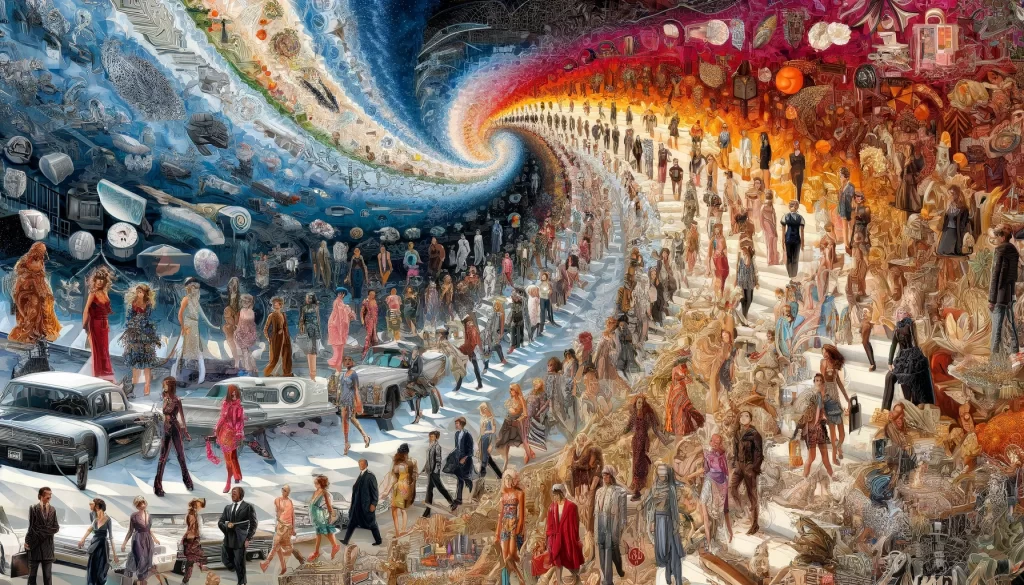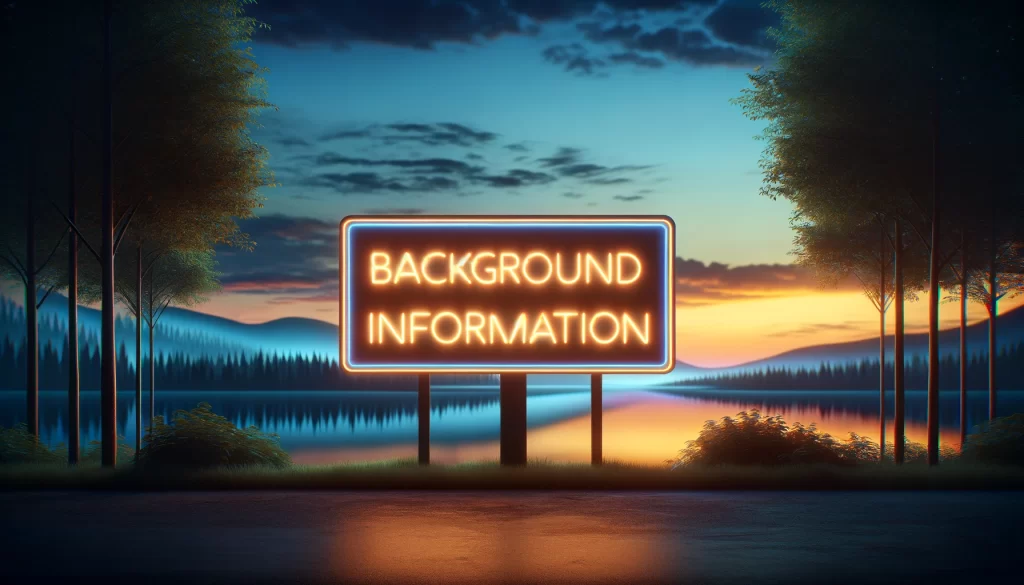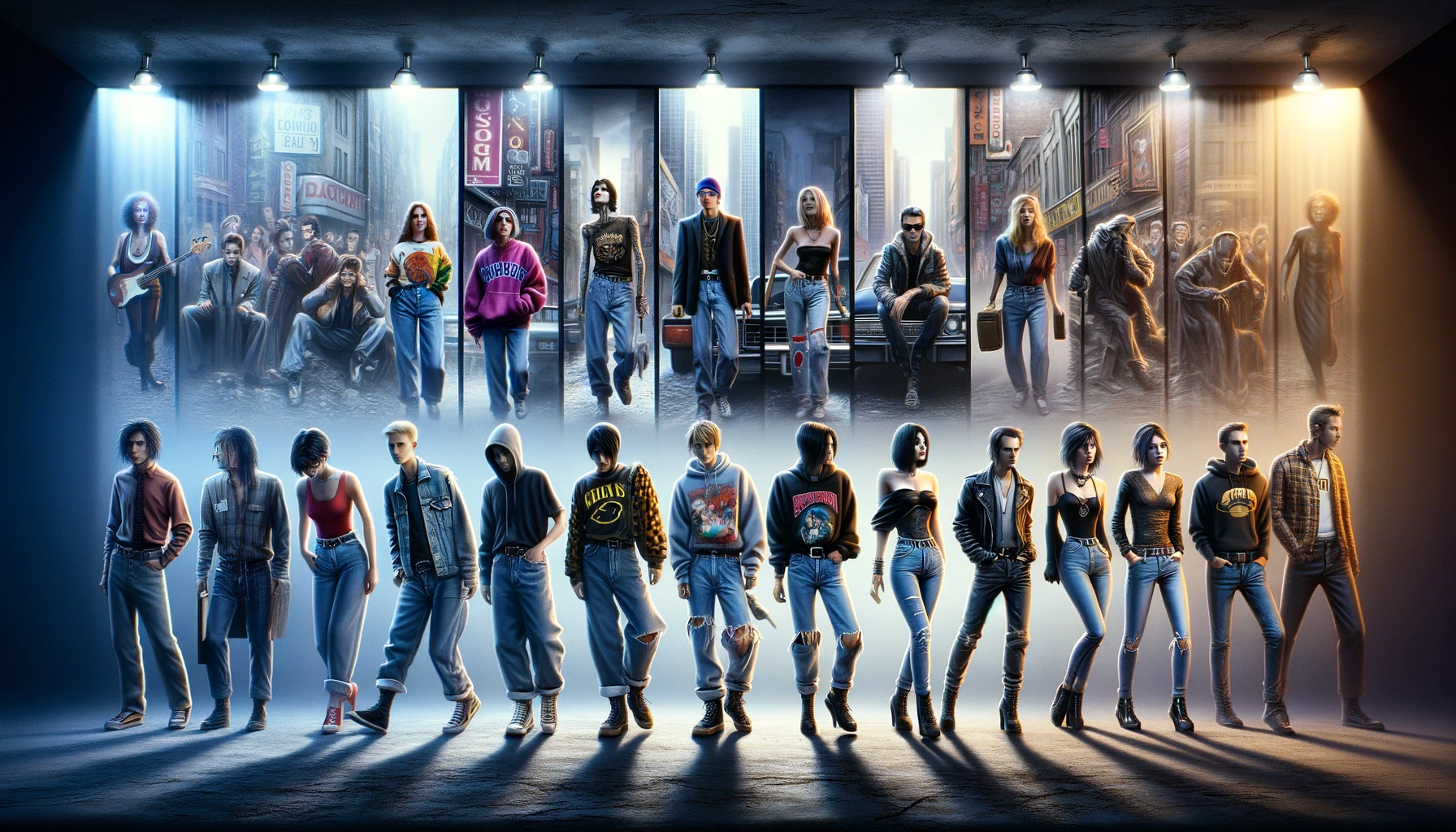When Moe Black was growing up, everyone seemed to be wearing the same type of jeans: the super tight, skinny jeans. If you weren’t wearing them, you might as well have been from another planet. Moe, who is now 29 years old and creates fashion content for a living, remembers this time very well. Back then, skinny jeans were what everyone thought was cool, largely because that’s what celebrities and music bands wore. Moe especially loved bands like Green Day, which not only made great music but also stood for something more. They often expressed their views on politics and society, and their style of dressing reflected their beliefs. Moe wanted to emulate that, wearing her hair dyed and styled to the side, big t-shirts with graphics, checkerboard Vans, and, of course, those iconic skinny jeans.
However, fashion changes, and what was once a must-have in your wardrobe can quickly become outdated. These days, the style has shifted towards more relaxed, 1990s-inspired clothing. But why does fashion change like this?
The journey of a fashion trend usually begins with a trendsetter, someone who brings a new style to the forefront. This could be a designer, an artist, or even a musician. For instance, the grunge look, which became popular in the early ’90s, was greatly influenced by Marc Jacobs’ collection that honored the alternative rock scene. Suddenly, everyone wanted to wear oversized flannels and slouchy clothes, because they saw it in magazines and on celebrities.
But as soon as a style becomes too common, it loses its appeal, only to possibly come back into fashion years later when it feels fresh and new again. Fashion, after all, tends to repeat itself.

The reasons behind these changes in fashion aren’t just about wanting something new to wear. Fashion historian Kimberly Chrisman-Campbell explains that for a trend to really take off, it needs to connect with people on a deeper level, beyond just looking good. It could be about expressing your identity, fitting in with a certain group, or even making a statement about your beliefs.
Another interesting point is that fashion reflects the times we live in. For example, the trend towards “quiet luxury” gained traction as people were trying to find ways to signify wealth and success during the economic uncertainty brought on by the COVID-19 pandemic. This trend focuses on minimalist, high-quality clothing that suggests a certain level of affluence without being overly flashy.
So when you see people ditching skinny jeans for wider, more comfortable pants, it’s not just a random shift. It could be influenced by a variety of factors, including changes in society, the economy, or simply the desire for something different after a decade of tight jeans. Fashion trends can tell us a lot about what’s happening in the world and how people are feeling.
This article is based on the following article:
https://www.npr.org/2024/04/11/1241145778/fashion-skinny-jeans-trends-vogue-quiet-luxury

Background Information
By understanding these key concepts and historical contexts, readers can gain a deeper appreciation of how and why fashion trends evolve and the various factors that influence these changes. This background information helps to contextualize the shifts in fashion preferences described in the article, from the dominance of skinny jeans to the resurgence of ’90s styles and the emerging trend of “quiet luxury.”
1. Fashion Trends
A fashion trend is a particular style or approach to clothing and accessories that becomes popular among a large group of people for a certain period. Trends can vary greatly and can include specific types of clothing, ways of styling outfits, colors, materials, and more. They often reflect cultural changes and societal values of the time.
2. The Fashion Industry
The fashion industry encompasses all the businesses involved in designing, creating, marketing, and selling clothing and accessories. It includes high-end designers who create runway looks, as well as mass-market retailers that sell clothing to the general public. The industry is known for its fast pace, with styles changing every season and new trends constantly emerging.
3. Influence of Pop Culture and Music
Pop culture, which includes music, movies, television, and celebrities, has a significant influence on fashion. Musicians and bands, in particular, have historically been trendsetters, influencing their fans to adopt certain styles. For example, the grunge music scene of the early 1990s, characterized by bands like Nirvana and Pearl Jam, had a massive impact on fashion, popularizing flannel shirts, distressed jeans, and a generally more relaxed and disheveled look.
4. The 1990s Fashion Revival
Fashion from the 1990s has seen a resurgence in popularity in recent years. This decade was known for its diversity in styles, including grunge, minimalism, and hip-hop fashion, among others. Key elements of ’90s fashion that have made a comeback include wide-leg jeans, crop tops, flannel shirts, and sneakers. This revival is part of the cyclic nature of fashion, where past trends re-emerge, often with a modern twist.
5. Economic and Social Factors Influencing Fashion
Fashion trends are not only about aesthetics but are also deeply influenced by the socio-economic conditions of the time. For instance, periods of economic downturn may lead to a rise in minimalist, high-quality fashion as people look for value and longevity in their purchases. Social movements and shifts in societal norms can also lead to changes in fashion, reflecting the public’s changing attitudes and beliefs.

Debate/Essay Questions
- Is Fashion a True Form of Self-Expression or Merely a Follow-the-Leader Game?
Please subscribe to Insight Fortnight, our biweekly newsletter!
